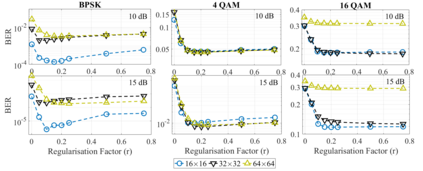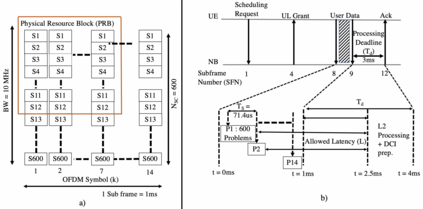Optimal MIMO detection has been one of the most challenging and computationally inefficient tasks in wireless systems. We show that the new analog computing techniques like Coherent Ising Machines (CIM) are promising candidates for performing near-optimal MIMO detection. We propose a novel regularized Ising formulation for MIMO detection that mitigates a common error floor problem and further evolves it into an algorithm that achieves near-optimal MIMO detection. Massive MIMO systems, that have a large number of antennas at the Access point (AP), allow linear detectors to be near-optimal. However, the simplified detection in these systems comes at the cost of overall throughput, which could be improved by supporting more users. By means of numerical simulations, we show that in principle a MIMO detector based on a hybrid use of a CIM would allow us to add more transmitter antennas/users and increase the overall throughput of the cell by a significant factor. This would open up the opportunity to operate using more aggressive modulation and coding schemes and hence achieve high throughput: for a $16\times16$ large MIMO system, we estimate around 2.5$\times$ more throughput in mid-SNR regime ($\approx 12 dB$) and 2$\times$ more throughput in high-SNR regime( $>$ 20dB) than the industry standard, Minimum-Mean Square Error decoding (MMSE).
翻译:无线系统最具有挑战性和计算效率最低的任务之一。我们显示,Coherent Ising Machines(CIM)等新型模拟计算技术是进行接近最佳的MIMO检测的有希望的候选人。我们建议为MIMO检测采用新型正规化的Ising配方,以缓解常见的差错地面问题,并进一步将其演变成一种算法,以达到接近最佳的MIMO检测。大规模MIMO系统在接入点拥有大量天线,允许线性探测器接近最佳。然而,这些系统中的简化检测是以总体吞吐成本为代价的,可以通过支持更多的用户来改进。我们通过数字模拟,我们表明原则上以混合使用CIMMIM为基础的IM检测器将使我们能够增加发射天线/用户,并大大提高电池的总体吞吐量。这将打开使用更具有侵略性的调制和调制的操作机会,从而实现高通量:以16美元以上美元为美元,通过高MIMO系统,我们估计以2.5美元为双倍的MIMIMO检测器,通过高的系统,以1美元为1美元为1美元为1美元,通过中MRPMDRPMDR值。















